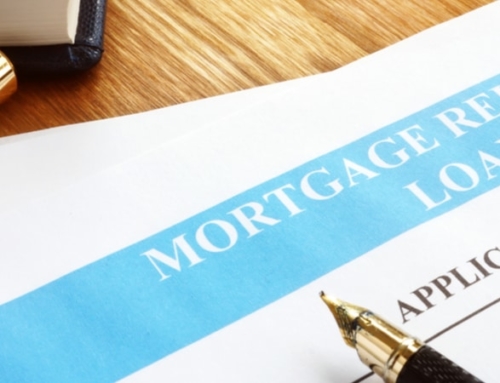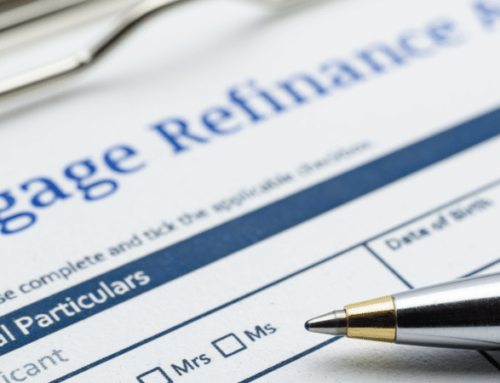Rates have fallen significantly over the past six months, and have officially dropped to the lowest levels in more than 30 years.
How low is low? Today, you can get a no-cost, 30-year fixed rate loan that will carry an interest rate of less than 7 percent. If you want to pay points, you can see your interest rate drop to 6 percent or even less. A 15-year, no-cost loan will carry an interest rate of 6.50 percent, or less. The 1-year adjustable is at 5.75 percent.
What do these numbers mean? It means that even if you refinanced during October, 1993, rates are now even lower.
The question you now have to ask yourself is whether or not it’s worth your while to refinance. Here are some things to think about.
No-cost loans.
The mortgage market has made it extremely easy and inexpensive to refinance your loan. Instead of pulling cash out of your pocket to refinance, take a slightly higher interest rate and allow the lender to pay those expenses for you. A no-cost refinance means exactly that: It should cost you nothing. It also allows you to compare different lenders on an apples-to-apples basis.
Don’t rule out points entirely.
While a no-cost refinance may be right for some people, if you’re planning to stay in this home for a long time, and can “pay back”
your points and closing costs out of the savings you’ll get with a much lower interest rate, you should consider doing just that. For example, you might get a no-cost loan with an interest rate of 7 percent. But if you pay 2 points, your loan might have an interest rate of 6 percent. Over 30 years, that can really add up. While you can’t deduct points paid in the year you refinance your loan, you may deduct a portion of them (1/30 if you have a 30-year loan, 1/15 if you have a 15-year loan) each year over the course of the loan term. If you refinance again, or sell your home before the loan term ends, you may deduct whatever is left at that time.
Consider trading your 30-year loan for a 15-year loan.
The big savings comes from paying off your loan over a shorter period of time. That’s because a larger slice of each payment is earmarked for principal rather than interest. The shorter your loan term, the more you’ll save. For example, on a $100,000, 30-year loan with an interest rate of 6.75 percent, you’ll pay $648.60 per month, $7,783.20 per year, or $233,496 over the life of the loan. The total interest you’ll pay is $133,496. But if you instead take out a $100,000 for 15 years, at an interest rate of 6.50 percent, you’ll pay $871.11 per month, $10,453.32 per year but only $156,799.80 over the life of the loan. The total interest you’ll pay is $56,799.90, a savings of $83,000 over the 30-year loan.
Don’t take out cash unless you have a better place to put it.
A lot of times, homeowners think that refinancing is simply an opportunity to get more cash. And many times, lenders will allow you to take out up to 75 or 80 percent of your equity. While you may be able to get cash out during a refinance, you shouldn’t do it unless you have a better place to put that money. For example, if you’re paying 18 percent on your $20,000 credit card balance, by all means you should refinance and use home equity to pay off your credit card bill. (Don’t forget to cut up your credit card immediately thereafter.) You can also use your cash to invest, if you believe you’ll earn more on your money (after you pay taxes on the profit) than you’re paying to borrow it. If you’re paying 6.5 percent on your loan, and you’re in the 28 percent bracket, and you itemize, you’re really only paying about 5 percent for your mortgage. If you can find an investment that will pay better than 5 percent (after taxes), you may want to put your cash there. Increasing your annual return by a couple of percentage points means you’ll add tens of thousands of dollars to your retirement kitty.
Bad credit doesn’t mean you can’t refinance.
But your options may be more limited. Start by paying all of your bills on time. Stop charging new items you can’t pay for, and begin making additional payments to pay down your additional debt as quickly as possible. Give yourself six months to prove to lenders you’re serious about making your credit as good as possible. Then, start shopping around to refinance your home loan. You may also want to call your current lender and ask if you can simply have your current interest rate lowered to be more in line with where the market is today. Your lender may say no, but might agree to lower you rate so that you’re paying less than you were, but more than the going rate. Remember, the best interest rate and terms go to the folks who have the best credit. It’s well worth your time to improve your credit history.
Oct. 17, 2003.






Leave A Comment